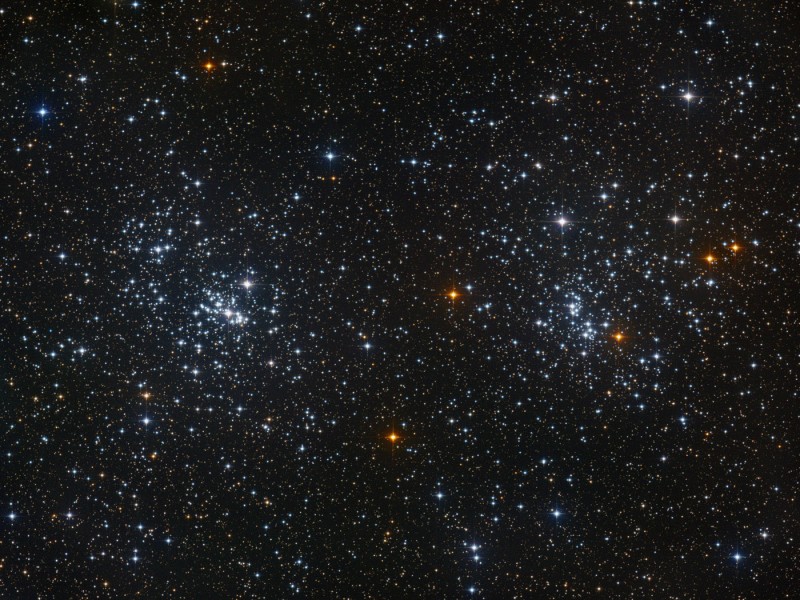Credit & Copyright: Volker Wendel,
Josef Popsel, Stefan Binnewies
Explanation:
Skygazers recently following
Comet Holmes
have probably also chanced across this
lovely starfield,
not far from the comet on the sky in the constellation
Perseus.
Some 7,000 light-years away, this pair of open or galactic
star clusters is an easy
binocular target and is visible to the unaided eye from
dark sky areas.
In fact, it was cataloged in 130 BC
by Greek astronomer Hipparchus.
Now known as
h and
chi Persei, or
NGC 869(left) and NGC 884, the clusters
themselves are separated by only a few hundred light-years and
contain stars much younger and hotter than the Sun.
In addition to being physically close together, the clusters' ages
based on
their individual stars are similar - evidence that
both clusters were likely a product of the same star-forming
region.
1999 2000 2001 2002 2003 2004 2005 2006 2007 2008 2009 2010 2011 2012 2013 2014 2015 2016 2017 2018 2019 2020 2021 2022 2023 2024 2025 |
Январь Февраль Март Апрель Май Июнь Июль Август Сентябрь Октябрь Ноябрь Декабрь |
NASA Web Site Statements, Warnings, and Disclaimers
NASA Official: Jay Norris. Specific rights apply.
A service of: LHEA at NASA / GSFC
& Michigan Tech. U.
|
Публикации с ключевыми словами:
Рассеянное скопление - galactic cluster
Публикации со словами: Рассеянное скопление - galactic cluster | |
См. также:
Все публикации на ту же тему >> | |
